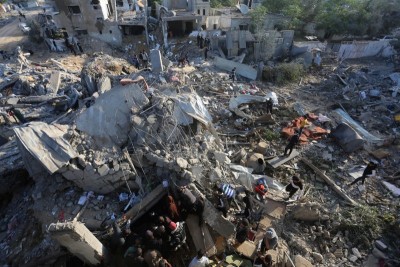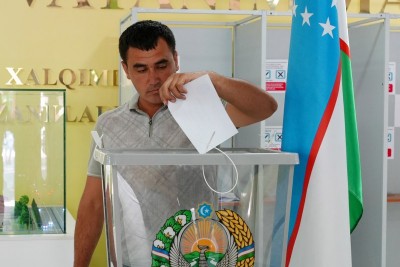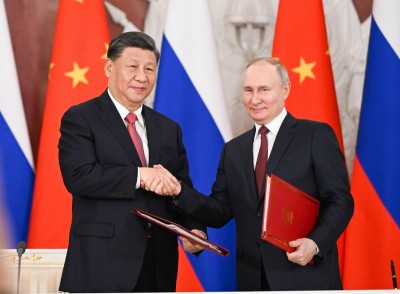
UNSC Report slams Pakistan’s role in Afghanistan; flags complicity in terrorism, narcotics & natural resource loot
The glaring shortcomings and lacunae in the United States (US) – Taliban Agreement of 29 February have been outlined in several EFSAS publications, including the Commentary of 06-03-2020 titled ‘The US – Taliban Agreement: Vindication of terrorism and betrayal of the common Afghan’.
The flaws in the US reasoning behind signing the agreement and the advantageous position that its doing so had put the Taliban in, have been commented upon by several other regional experts. EFSAS has also been critical of the incessant Pakistani attempts to destabilize Afghanistan with the aim of propping up a puppet regime there, which in turn would facilitate turning the country into a safe haven for Pakistan’s terrorist proxies.
The Analytical Support and Sanctions Monitoring Team, which was formed to assist the ISIL & Al Qaeda Sanction Committee set up under United Nations Security Council (UNSC) resolution 1267, had submitted its annual report titled ‘The eleventh report of the Analytical Support and Sanctions Monitoring Team submitted pursuant to resolution 2501 (2019) concerning the Taliban and other associated individuals and entities constituting a threat to the peace, stability and security of Afghanistan’ to the UNSC on 30 April.
The report, which was publicly released on 1 June, concurred broadly with skeptics of the US – Taliban Agreement and highlighted the disquieting role being played by Pakistan in Afghanistan.
 Signing of the agreement US-Taliban agreement in Feb this year.
Signing of the agreement US-Taliban agreement in Feb this year.
One of the key conditions that the US had got the Taliban to agree to before the signing of the 29 February agreement was that the Taliban would jettison its ties with Al Qaeda.
The agreement said that the “Taliban will not allow any of its members, other individuals or groups, including al-Qa'ida, to use the soil of Afghanistan to threaten the security of the United States and its allies”.
US Secretary of State Mike Pompeo had asserted shortly after the signing that the Taliban had “agreed that they would break that relationship and that they would work alongside of us to destroy, deny resources to and have al-Qaeda depart from that place”, adding that the agreement had a “deep, complex, well-thought out, multi-month negotiated verification complex and mechanism by which we can observe and hold every member of the agreement accountable”.
The recently released report of the Analytical Support and Sanctions Monitoring Team, however, expressed serious doubts about the sincerity of the Taliban in implementing this important clause of the agreement.
Not only did the report say that, “The senior leadership of Al-Qaida remains present in Afghanistan, as well as hundreds of armed operatives, Al-Qaida in the Indian Subcontinent, and groups of foreign terrorist fighters aligned with the Taliban”, but it added significantly that, “The Taliban regularly consulted with Al-Qaida during negotiations with the United States and offered guarantees that it would honour their historical ties”.
It added that the Taliban’s interactions with Al Qaeda were held “to discuss co-operation related to operational planning, training and the provision by the Taliban of safe havens for Al Qaeda members inside Afghanistan”.
It further informed that, "Relations between the Taliban, especially the Haqqani Network, and Al-Qaida remain close, based on friendship, a history of shared struggle, ideological sympathy and intermarriage”. The report also noted that, “Al-Qaida has reacted positively to the (US –Taliban) agreement, with statements from its acolytes celebrating it as a victory for the Taliban’s cause and thus for global militancy”.
The revelation that the Taliban was running with the hare and hunting with the hounds throughout the period of negotiations with the US is outrageous in itself, but when seen in conjunction with the other disclosures in the report, it morphs into outright shocking.
The report states that during these meetings with Al Qaeda, the Taliban regularly assured Al Qaeda that it would not abandon its ties with it. Citing an example, it said that in the spring of 2019 a former adviser to the Taliban's founder, Mullah Omar, “met with Hamza Usama Muhammad bin Laden (Osama bin Laden’s son) to reassure him personally that the Taliban would not break its historical ties with Al-Qaida for any price”.

The report concluded that the Taliban, instead of breaking or watering down its ties to Al Qaeda, actually appeared to have strengthened its relationship with it. It quoted one member State as averring that, “that the regularity of meetings between Al-Qaida seniors and the Taliban made any notion of a break between the two mere fiction”.
Among the other issues highlighted in the report that had the effect of acting as dampeners on the US –Taliban agreement was the fissures that existed within the Taliban leadership. The UN report observed that while the Taliban remained a disciplined fighting force, internal divisions within them had come to notice. As a result, their messaging was always extreme and hard-line.
The report added, “The group also appears well prepared for the 2020 fighting season and raising the tempo of its attacks on Afghan government targets while trying to avoid provoking the United States. … Hard-line Taliban believe that they can and will still achieve their aims by force”.
The UN report opines that with an estimated strength of between 55,000-85,000 fighters, “it is clear that the Taliban are not struggling with respect to recruitment, funding, weapons or ammunition”. However, the Taliban have been struggling to capture and hold district and provincial capitals largely because of the air support given to the Afghan security forces by the US. Once the US withdraws and this assistance is no longer available, the rest of Afghanistan could fall rapidly to the Taliban.
The differing interpretation of the US –Taliban agreement by all the parties involved was another factor. An example of this was provided by the Afghan media house Tolo News, when it reported that the Taliban claims that 426 of the 2,710 prisoners released recently by the Afghan government in pursuance of the US – Afghan agreement were not Taliban members at all, while the Afghan government claimed that several of the 460 prisoners released by the Taliban in exchange were not members of the government forces.
The UN report, therefore, quite rightly noted that such “Differences in interpretation of the agreement will be difficult to resolve”.
It came as no surprise, therefore, that the US response to the report appeared rather sheepish and defensive. US special representative for Afghanistan reconciliation, Zalmay Khalilzad, did not respond to a question from the media on whether the US was aware of the meetings between the Taliban and Al Qaeda. Noting that the report covered the period till 15 March, which was only a fortnight after the signing of the deal with the Taliban, Khalilzad said, “We recognize it takes time to take the steps necessary operationally to deliver on their commitments. If the Talibs do not deliver, and I'd rather not speculate, then as I said before, the commitments that we have made is also then subject to change, if the other side doesn't deliver on its commitments”.
The UN report has served to highlight just how fragile the US – Taliban agreement really is and how the return of peace and stability to Afghanistan is likely to remain elusive, the US – Taliban deal notwithstanding.
It also demonstrates that for the US, stability in Afghanistan figured way lower in the pecking order of its aims and objectives for signing the agreement than it actually ought to.
It reiterated and reinforced the fact that for the US, the overriding objective was for it to fulfill its President’s electoral promise of 2016 to get US troops out of Afghanistan, and to ensure that this was done well before the 2020 elections came around, no matter what the cost of such a withdrawal for Afghanistan and its people.
The UN report is, unsurprisingly, also highly critical of Pakistan and its role in Afghanistan. It asserts that the Afghan Taliban's role as a credible counter-terrorism partner for the international community in the aftermath of the 29 February agreement with the US will require careful monitoring because of the “number of foreign terrorist fighters in search of a purpose and livelihood in Afghanistan, including up to 6,500 Pakistanis”. These foreign fighters pose a serious threat to Afghanistan's security because of their activities and permanent presence in the country.

The report added that Afghan officials had highlighted the Jaish-e-Mohammad (JeM) and the Lashkar-e-Taibah (LeT), both of which are internationally known and acknowledged as being terrorist proxies of the Pakistani military establishment, among the foreign terrorist groups posing a security threat to Afghanistan.
The report said that both these groups had a presence in the eastern Afghan provinces of Kunar, Nangarhar and Nuristan, “where they operate under the umbrella of the Afghan Taliban” and “facilitate the trafficking of terrorist fighters into Afghanistan, who act as advisers, trainers and specialists in improvised explosive devices. Both groups are responsible for carrying out targeted assassinations against government officials and others. Lashkar-e-Tayyiba and Jaish-i-Mohammed were stated to have approximately 800 and 200 armed fighters, respectively, co-located with Taliban forces in Mohmand Darah, Dur Baba and Sherzad Districts of Nangarhar Province. In Kunar province, LeT retains a further 220 fighters and JeM has a further 30, all of whom are dispersed within Taliban forces”.
Interestingly, the report of the same Analytical Support and Sanctions Monitoring Team for last year had in June 2019 assessed the total number of LeT fighters active in the Kunar and Nangarhar provinces as being about 500.
The fact that the total number of LeT terrorists in these two provinces has more than doubled in the last one year lends credence to reports that have appeared over the past year suggesting that the LeT and the JeM, both of which have been responsible for high-profile terror attacks in India, had been relocating hundreds of their fighters to Afghanistan following increased pressure from the international community on Pakistan to crack down on these Jammu & Kashmir-centric terror groups.
The relocation was reportedly undertaken at the instance of the handlers of these terrorist groups in the Pakistani military establishment.
This year’s report also highlighted the presence of Pakistani terrorists in the Islamic State Khorasan Province (ISKP), the name under which the ISIS operates in Afghanistan. These include ISKP commander Abdullah Orakzai alias Aslam Farooqi, who was apprehended along with 21 others in Kandahar in March.
Twelve Pakistani nationals were among those arrested along with Farooqi. The report, interestingly, also observes that many of the attacks claimed by the ISKP “demonstrated some degree of involvement, facilitation, or the provision of technical assistance by the Haqqani Network”. This had also been suggested by EFSAS in earlier publications.
The Haqqani Network is widely accepted to be yet another important terrorist asset of the Pakistani military establishment.
The Indian government took note of the UN report, and the spokesperson of its Ministry of External Affairs (MEA) issued a statement on it on 2 June. He stated, “We note with serious concern reference in the Report to the continued presence of the senior leadership of the UN designated terrorist organisation Al Qaida and its affiliates in Afghanistan; as well as a large number of foreign terrorist fighters, including up to 6500 Pakistan nationals, operating in Afghanistan. Besides, UN designated entities like Lashkar-e-Tayyiba and Jaish-i-Mohammed, operating from Pakistan controlled territories facilitating trafficking and imparting training to other terrorists in Afghanistan. This vindicates India’s long standing position that Pakistan remains the epicentre of international terrorism.
"That proscribed terrorist entities and individuals continue to enjoy safe havens and recruit, train, arm, finance and operate with impunity from Pakistan with State support. They inflict violence and spread terrorism in the region and other parts of the world. Pakistan has failed in fulfilling its international obligations, including under relevant UNSC resolutions and the Financial Action Task Force, to put an end to support to terrorism emanating from territories under its control.
"The international community should hold Pakistan accountable and seek sustained, verifiable and irreversible action by Pakistan against terrorism. India will continue to contribute and support all efforts towards securing peace, security and stability in Afghanistan”.
In response, the Pakistani Foreign Office attempted a feeble rejoinder by claiming that there was “no reference to 'safe havens' in Pakistan in the Monitoring Team report”. This statement ignored completely the remaining damning portions of the report relating to Pakistan.
Other than the presence of a large number of Pakistani terrorists belonging to Pakistan-sponsored terrorist groups in Afghanistan, and the disruptive activities undertaken by them there, two significant aspects pertaining to Pakistan in the report, both of which figured in the section on ‘Taliban finances and connections to criminal activity’, are noteworthy. Both these aspects have been glossed over by the media.
In the first of these, the UN report states at paragraph 52 that “narcotic smuggling networks operate in Nangarhar and into Pakistan with the reported acquiescence of security officials who regulate and profit from the smuggling of heroin, hashish and other goods. Security officials reportedly allowed smuggling syndicates, known as tanzeems, to operate without fear of arrest in return for a portion of the profit. Revenues were ultimately shared between security officials, heads of the tanzeems and the Taliban. Interlocutors stated that this system was a big source of revenue for the Taliban”.
A study to quantify the volume of funds that the Pakistani security officials generated from the proceeds of narcotics smuggling from Afghanistan could reveal a very high figure. The flow of these funds, especially the percentage of it that eventually makes its way into the pockets of the high ups within the Pakistani military establishment, would also be interesting to compute.
After all, the military leadership in Pakistan, which is known to commandeer a sizeable proportion of the country’s budget, would certainly not squander away the great riches that accrue from control over the narcotics trade by selflessly leaving its lower ranked personnel who man the border to prosper alone and fill their personal coffers.
The second aspect that has not received the attention that it deserves figures at paragraph 55 of the report. It reads, “During visits to Helmand Province, the Monitoring Team received reports of the illicit extraction of onyx marble, gold, rare earth minerals, aragonite, copper, tin and zinc being carried out on a large scale by the Taliban in districts not under government control, such as Dishu and Khan Neshin. Local sources reported that mining companies in Balochistan Province of Pakistan were involved in excavating precious minerals and marble that was later refined in Karachi and sold as products of Pakistan.
Taxation and revenues from mining contracts were reportedly overseen by the Taliban’s “Dabaro Comisyoon” (Stones and Mines Commission)”. Quite obviously, such blatant plunder and laundering of war-ravaged Afghanistan’s precious natural resources could not possibly have taken place without the full knowledge of the Pakistani military establishment, and, indeed, without it having a finger deep in the pie.
The oft-repeated contention of the Pakistani establishment that it wished Afghanistan well could clearly not be true while the establishment simultaneously exports terrorism to Afghanistan, profits from narcotics smuggling out of Afghanistan, and illegally and surreptitiously exploits Afghanistan’s natural resources.
(Located in Amsterdam, the European Foundation for South Asian Studies (EFSAS) is an EU accredited leading independent, non-profit think tank and policy research institution)
Support Our Journalism
We cannot do without you.. your contribution supports unbiased journalism
IBNS is not driven by any ism- not wokeism, not racism, not skewed secularism, not hyper right-wing or left liberal ideals, nor by any hardline religious beliefs or hyper nationalism. We want to serve you good old objective news, as they are. We do not judge or preach. We let people decide for themselves. We only try to present factual and well-sourced news.







